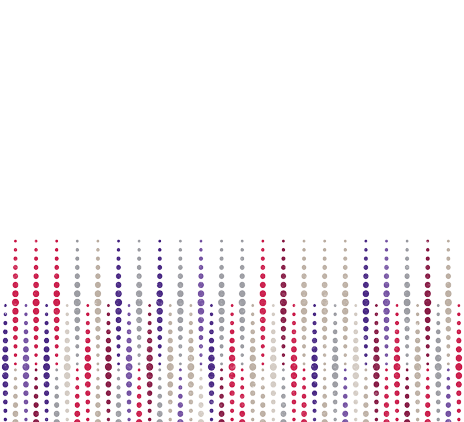-
Valuations
For organisations involved in a transaction, dispute, merger, acquisition or restructuring, the value of the company involved and its assets will be an important commercial consideration. A clear and thoughtful view of the respective value is therefore essential in such situations.
-
Due diligence
Due diligence identifies risks and examines potential financial, tax, legal or operational pitfalls. We offer robust due diligence services, clearly tailored to our clients' requirements.
-
Independent trusted advice
Do you want to sell your business or rather grow it through an acquisition?
-
Corporate reorganisations
Redesigning your group structure can mean significant cost savings and/or efficiency improvements. The restructuring provisions of the Companies and Associations Code (merger, demerger, contribution or transfer of branch of activity, etc.) provide you with the legal means to achieve this.
-
Legal support
Mergers and acquisitions represent a challenge for dynamic organisations. As a manager or entrepreneur, you want to look at this challenge from all sides to obtain the best conditions. That is why our professionals work on the basis of integral process management during merger, sale or acquisition processes.

-
Transfer pricing
Our experts help document your transfer pricing principles, intra company transactions and internal reporting and organisation. They design and implement settlement pricing structures for both national and multi-national companies. When services are centralized, they determine acceptable costs and margins.
-
Global mobility services
International employment has become a standard practice in today's HR policies. Nevertheless, it raises several questions for both the expat and the employer.
-
International tax & VAT
If your business has grown internationally or if you’re considering to take the step to expand abroad, you want to continue maximizing your efforts. Where domestic corporate tax laws may already be quite complicated, local legislation in other countries and international tax laws will most certainly add to the complexity of your business environment and organization.
-
IFRS reporting
IFRS reporting services for international groups and SMEs.
-
Financial statement audit
As a large organisation, you are required by law to appoint an auditor to report to the general meeting on the (consolidated) financial statements.
-
Agreed upon procedures
As an entrepreneur or manager, you may entrust specific work to your company auditor. The nature, extent and scope of these activities or procedures are always mutually agreed upon.
-
IFRS reporting
The European International Financial Reporting Standards (IFRS) have been mandatory for listed companies in the European Union since 2005. However, these standards also offer specific advantages for unlisted companies and SMEs.
-
Legal assignments
When significant events occur, the Companies Act imposes audit and reporting obligations on your company. In which cases is reporting required?
-
Transaction advisory services
As independent advisers, our transaction specialists offer independent advice, not just on the financial aspects, but throughout the transaction cycle. Their independence is beneficial both to buyers as well as sellers. Our advisers work according to a structured methodology, keeping track of all financial, operational and strategic elements.
-
Restructuring
Based on our "to-the-point" analyses, we identify with you the appropriate restructuring opportunities to help improve cash flows, results and balance sheet positions in the short term.
-
Internal audit
An effective internal audit function helps dynamic organisations better manage risks and turn them into opportunities.
-
Risk and compliance management
What are the risks to my business? What steps should I take to avoid these risks? Our business-risk advisers will be happy to help you get started.
-
Data analytics & process mining
Companies have a huge amount of data at their disposal, and that amount of information is also increasing every day. Gaining deeper insight through data analysis can increase the value, commercial challenge and level of understanding of the business.
-
Process optimisation and internal controls
Futureproof organisations need to regularly revisit their strategies and objectives thereby optimizing their tactics, processes, internal controls and systems
-
ESG Consulting
Get to work on sustainability with Grant Thornton’s assistance. Choose our concrete, tailor-made solutions and embed ESG in your business operations.
-
Cyber risk services
Cybersecurity and data privacy threats evolve on a daily basis. It is essential to recognize the threats, understand your exposure, balance your priorities and formulate a comprehensive response. We provide support in addressing both global and local cybersecurity and privacy compliance needs. We assess the risks of cyberattacks and the maturity of security programs, and we recommend and implement workforce, process and technology solutions to protect information assets. Contact us for a solid strategy that will help you proactively manage cyber risks both inside and outside your organization. We are ready to help you safeguard your future.
-
Forensic & integrity
Fraudsters become more inventive and can adopt different strategies depending on their target’s weaknesses. It is therefore crucial to ensure the appropriate level of fraud risk preventative measures are present in your organization.
-
Whistleblow services
A whistleblowing programme helps your organisation to both prevent and detect fraud quickly. That way, you can reduce and even avoid fraud losses.
-
Corporate tax
Laws on taxation are dynamic. Making sure your organization’s liabilities are met, requires constant monitoring and managing. Our advisers can offer case-by-case advice, help you coordinate, assist in filing reports, assess your risks, … or fully execute compliance processes.
-
VAT
This requires a high level of experience, knowledge and insight of indirect tax, but also of your industry and organisation. Our team of full-time VAT specialists can assist you in various fields, ranging from advice and risk control to implementation and optimisation. As companies need advice as well as assistance and support, we execute and assist in fulfilling the necessary formalities and apply for permits.
-
International tax & VAT
If your business has grown internationally or if you’re considering to take the step to expand abroad, you want to continue maximizing your efforts. Where domestic corporate tax laws may already be quite complicated, local legislation in other countries and international tax laws will most certainly add to the complexity of your business environment and organization.
-
Compensation & benefits
To recruit and retain the best talent, it is essential to offer optimised and competitive pay packages. Grant Thornton helps you put together attractive packages tailored to your activity and the profile and expertise level of your employees.
-
Transfer pricing
Our experts help document your transfer pricing principles, intra company transactions and internal reporting and organisation. They design and implement settlement pricing structures for both national and multi-national companies. When services are centralized, they determine acceptable costs and margins.
-
Global mobility services
In a globalised world, businesses must work seamlessly across borders. Organisations operate in multiple countries and view international expansion as a strategic objective. International talent mobility is a key element of a successful global business and with it comes challenges and risks, as well as opportunities. With ever changing global tax regulations, an effective, compliant and cost-efficiently managed international mobility program is a critical component of successful talent management and business operations.
-
Private client services
Our solutions include dealing with emigration and tax mitigation on the income and capital growth of overseas assets.

-
Legal support & contracts
Running your business on a day-to- day basis often has legal consequences. Not only key moments such as take-overs, shares transactions and mergers require legal support, but also your organisation’s daily operations. This is why our legal advisers are equipped to provide you with advice in many fields, both at a national and at an international level. They develop an understanding about your organisation’s activities and development plans. This allows them to offer you up-to date, relevant advice supporting your business.
-
Company law & acquisitions
Your organisation is accountable towards many stakeholders: shareholders, board members, management and many more. Needless to say expert support to fulfill all reporting requirements can mean added value to your business.
-
Labour and social security law
Belgian labour and social security legislation is a maze of schemes and regulations that employers tend to get lost in. Our legal experts issue advice and assist you, from the employee joining the company until leaving the company due to termination, retirement etc
-
IT law & GDPR
Every business depends on ICT support. Given the business-critical nature of many ICT applications, concluding solid contracts is an absolute must. Grant Thornton has extensive expertise in consulting on and drafting various types of ICT contracts.
-
Legal Counsel as a Service
Does your company need a 100% committed 'specialised' generalist who really knows the ins and outs of your company? Someone who thinks from your business perspective and provides pragmatic legal support by knowing your business strategy, its operations and business specifics? We can answer this need with "Legal counsel as a service".
-
Commercial Toolbox Check by Grant Thornton
A commercial toolbox is a collection of essential documents and templates that businesses use to manage their commercial relationships and transactions. This includes general terms and conditions of sale, service agreements, template client contracts, cookie policies, and other legal documents. By maintaining a well-organized and up-to-date commercial toolbox, you ensure that your business operates smoothly, remains compliant with the latest legal requirements, and is prepared to handle any commercial challenges that may arise.
-
Accounting & reporting
At Grant Thornton, we offer you our accounting services either on a fully outsourced basis or a co-sourced basis. Whether you choose to have our experts to take care of all of your financial reporting requirements on your behalf or you choose to use our services for a project or a part of your accounting function, we have the skills and experience to deliver the right quality output you need.
-
CFO-as-a-service
Are you a dynamic SME and do you want to be able to fall back on the expertise of a CFO? But is a full-time CFO still too big a step for your organisation? Grant Thornton offers you CFO-as-a-service.
-
Outsourcing
Your financial information is an important management tool. That is why it is important your entire reporting process, from budgeting to filing financial statements is in line with your strategy and information needs.
-
Consolidation
Our experts have a broad practical experience in consolidation. The methodology that we apply, guarantees a complete transparence of the consolidated data.
-
Global Compliance and Reporting Solutions
As an entrepreneur operating in different countries, you are often confronted with various local obligations (VAT, direct taxes, financial reporting, etc.). Thanks to our Global Compliance and Reporting Services (GCRS), we offer you the solution in this regulatory tangle.
-
Values and business culture
Our values guide us globally in the right direction to support our clients and ensure our own evolution, both individually and within our teams.
-
Flexibility and work-life balance
Flexibility and responsibility are our core values, both at work and beyond. So you can be ambitious while continuing to pursue a good work-life balance.
-
Client portfolio
We learn and grow together with our customers. That is why you get a varied customer portfolio with companies from very diverse sectors.
-
International network
With 62,000 colleagues in over 140 countries, we are one of the largest accountancy and advisory firms worldwide. You benefit from that enormous expertise.
-
Inclusive business culture
Whatever your experience, background, race, diploma, gender or orientation, you are welcome! We are interested in you as a person, so bring your full story with you.

Important increase of the personal liability of directors, subcontractors and employees!
On 1 February 2024, Book 6 of the New Civil Code was approved by parliament. This new book reforms Belgian extra-contractual liability law. The increase of the liability of 'auxiliary persons', such as directors of companies and associations, subcontractors and employees, is particularly striking. For these individuals, it is crucial to proactively take measures to protect against potential future claims that may be brought against them.
The new rules have been in effect since 1 January 2025. The article below details their impact over time, discusses practical consequences, and proposes measures to contain these effects.
What is an 'auxiliary person'?
An 'auxiliary person' (in current practice called an 'execution agent') is a natural or legal person who is entrusted by the debtor of a contractual obligation with the full or partial performance of that obligation, regardless of whether he performs this obligation on his own behalf and in his own name, or on behalf and/or in the name of the debtor.
Directors of companies and associations, subcontractors, but also employees are 'auxiliary persons'.
Some common examples:
- The plasterer who, on behalf of the main contractor, carries out plastering work for the client who has only contracted with the main contractor. There is no contract between the client and the plasterer, which means that the latter can be regarded as the auxiliary person of the main contractor who has the contract with the client.
- The directors of a legal entity are a subsidiary of the legal entity they control.
- Employees are auxiliary persons of their employer.
- Physical persons working through a management company, are personally considered to be an auxiliary person of this company towards the co-contractor of the management company.
In the following, 'principal' refers to the person for whom the auxiliary person works, and the contracting party of the 'principal' is referred to as 'co-contractor', with whom the auxiliary person therefore has no direct contractual relationship.
Previous law: elaborate protection of the auxiliary person
Up to and including 31 December 2024, the auxiliary person ('execution agent') had an elaborate protection vis-à-vis the co-contractor of his principal: as a rule, the co-contractor could not hold the auxiliary person accountable for the latter's defective performance of the agreement between the principal and its main co-contractor. This was established case law (of Belgium’s highest civil court) and is in practice referred to as the 'quasi-immunity of the auxiliary person/execution agent'.
The auxiliary persons were therefore extensively protected against non-contractual claims by the contracting parties of their principal pursuant to the wrong, late or non-performance of the principal's contractual obligations.
Some common examples:
-
Under previous law, if the plasterer had carried out its plastering work completely incorrectly, the co-contractor could only turn to his main contractor (with whom he has an agreement) for compensation and could not hold the plasterer liable for damage resulting from this fault.
-
The customer of a company whose directors refused to perform a contractual obligation of the company could not hold the directors personally liable for the damage resulting from this refusal.
-
An employer's customer could not hold the former’s employee liable for the damage he had suffered as a result of an employee's fault in the performance of his employment contract.
-
The principal of which the CFO is a management company could not turn to the natural person behind the management company for an error made by the natural person in the performance of the service agreement.
The only exception to this immunity under previous law was that auxiliary persons could be held liable if the fault attributed to them constituted a criminal offence (e.g. involuntary assault and battery, bribery, abuse of trust, forgery, fraud) or if this fault related not only to the contractual obligation, but also to the general duty of care incumbent on them.
In addition, that fault must have caused damage that was not solely attributable to the poor performance of the main contract, meaning, in practice, only in very exceptional circumstances such event gave rise to liability on the part of the auxiliary person.
The new rules: no more automatic protection for the auxiliary person
The new Civil Code[1] puts an end to the quasi-immunity of the auxiliary person:
'Unless otherwise provided by law or by contract, the provisions of law on non-contractual liability shall apply between the damaged party and the auxiliary person of his or her co-contractors.'
On the basis of the aforementioned article, an auxiliary person can henceforth be held directly (non-contractually) liable by the co-contractor of his principal.
Some common examples:
- If the above-mentioned plasterer has carried out his plastering work completely incorrectly, the owner of the building can therefore not only turn to the main contractor (with whom he has an agreement) for compensation, but he can also sue the plasterer (with whom he does not have an agreement) for damage resulting from this error.
- The customer of a company whose directors refuse to perform a contractual obligation of the company may, in addition to the company, also hold the directors personally liable for the damage resulting from this refusal (of course to the extent this refusal constitutes a fault on the part of these directors).
- From now on, an employer's customer can hold the former’s employee liable for the damage he has suffered as a result of an employee's fault in the performance of his employment contract. However, there is an important legal restriction for employees, which we will return to below.
- The client whose CFO is a management company may turn to the natural person behind the management company for an error made by the natural person in the performance of the service agreement.
Some key nuances
First and foremost, of course, it must still be proven that the auxiliary person himself has actually committed a foul that has caused damage to the principal's co-contractor.
It is also important to note that the provisions of Book 6 are, in principle, of supplementary law: the contracting parties can therefore deviate from them contractually, for example by stipulating that a co-contracting party shall refrain from bringing non-contractual liability claims against the auxiliary persons of its contractual partner (i.e. the principal).
Moreover, the provisions of Book 6 are without prejudice to other legislation that regulates the non-contractual liability of certain actors. For example, employees will also be protected in the new situation by Article 18 of the Employment Contracts Law, meaning that also in the future, they can only be held liable by third parties, including their employer's co-contractor, for gross faults or repeatedly occurring minor faults. This is evident from various passages in the parliamentary preparations.
The foregoing applies in a similar way to the limitations of liability laid down in the Code of Companies and Associations[2] (CCA) with regard to directors' liability. This means that directors can still invoke the restrictions provided for in the CCA[3] for errors committed in the performance of their mandate as directors.
In our opinion, however, directors can also be held liable on non-contractual grounds on the basis of Book 6, without being able to invoke the limitations of Article 2:57 of the CCA, in the event that the errors they allegedly have made, have nothing to do with the exercise of their directorship mandate. After all, such instances do not concern 'directors' liability'.
The new Civil Code[4] also provides that the auxiliary person “may invoke the same means of defence as" the defences that his principal can invoke against his co-contracting party on the basis of the latter’s (main) agreement with the principal. Limitations of liability stipulated by the principal in the (main) agreement with the co-contracting party will therefore apply to claims brought by the co-contracting party against the auxiliary person.
- Example: If the main contractor has stipulated in the agreement with the owner of the building that his liability is limited to €25,000, this limitation of liability can also be invoked by the plasterer against the owner of the building.
The same article also provides that the auxiliary person “may also invoke [against the co-contractor] the means of defence which he himself may invoke in this regard against his [own principal]” on the basis of their contract, which thus acquires third-party operation (‘derdenwerking’). Limitations of liability stipulated by the auxiliary person in his contract with his principal will therefore apply to claims brought by the co-contracting party against the auxiliary person.
- Example: If the plasterer has stipulated in the agreement with the main contractor that his liability is limited to €25,000, this limitation of liability can also be invoked by the plasterer against the owner of the building.
Auxiliary persons may also make use of defences arising from the legislation on special contracts (e.g. the rules on purchase and sale, rent, deposit, hotel contracts, etc.), including the limitation rules applicable to the contract.
It is important to note that the Belgian Civil Code[5] stipulates that the possibility of invoking the aforementioned defences never applies to damage resulting from (i) a violation of the physical or psychological integrity of the injured co-contracting party of his principal or (ii) a fault committed by the auxiliary person with the intention of causing damage.
Entry into force
The new rules have entered into force on 1 January 2025.
The law introducing the new Book 6 explicitly stipulates that the new rules only apply to facts that occur after the law enters into force.
Thus, if the harmful event has occurred prior to 1 January 2025, the auxiliary person will still be able to benefit from quasi-immunity, even if the claim for damages is brought to court after the entry into force of the new rules.
Conversely, if the harmful event occurs on or after 1 January 2025, the auxiliary person will no longer be able to benefit from quasi-immunity, even if his contractual relationship predates the entry into force of the new rules. In this way, the new rules also have an impact on the performance of existing contracts.
Possible protection measures
The foregoing makes it clear that immediate action is required to protect the auxiliary persons. The following measures can be considered:
- In order to protect your auxiliary persons, you can include a clause in your general terms and conditions and customer contracts that your customers/clients declare that they waive their right to bring liability claims against your agents (clause for the benefit of a third party).
- If you yourself act as an auxiliary person/subcontractor for a principal, you can include in your agreement with your principal:
- (i) a clause stating that you cannot be sued for damages twice for the same fault: either you compensate your principal or his client, but never both ('non bis in idem');
- (ii) the obligation for your principal to integrate a clause in its commercial agreements that its co-contractors (e.g. its customers/clients) declare to waive their right to bring liability claims against its auxiliary persons or at least to reproduce the limitations of liability from your agreement with your client as a perpetual clause in its contracts with its own clients, and to provide evidence of this before you start the provision of your services;
- (iii) a clause pursuant to which your principal will indemnify you against any extra-contractual claim by a third party (read: your principal's co-contractor).
It is also possible to discuss with your insurer the extent to which you or your auxiliary persons are protected against such claims on the basis of your current insurance policies. If necessary, the coverages should be extended to include these cases.
Conclusion
The above shows that the abolition of the quasi-immunity of the auxiliary person increases the liability risk of many actors in the business world (and beyond). After all, most of us qualify as 'auxiliary person' in one way or another relationship, be it in a director's mandate, as consultant, employee, subcontractor,...
Good contractual provisions, in combination with comprehensive insurance, can protect you against this to a large extent. It is therefore important to adapt yourself for this new reality as soon as possible by reviewing your commercial toolbox (customer contracts, consultancy agreement, general terms and conditions, etc.) and your insurance policies and amend them where necessary.
[1] Article 6.3, § 2
[2] Article 2:57
[3] Article 2:57
[4] Article 6.3, § 2
[5] Final sentence of Article 6.3, §1 in fine
[6] Article 2:57 of the CCA


